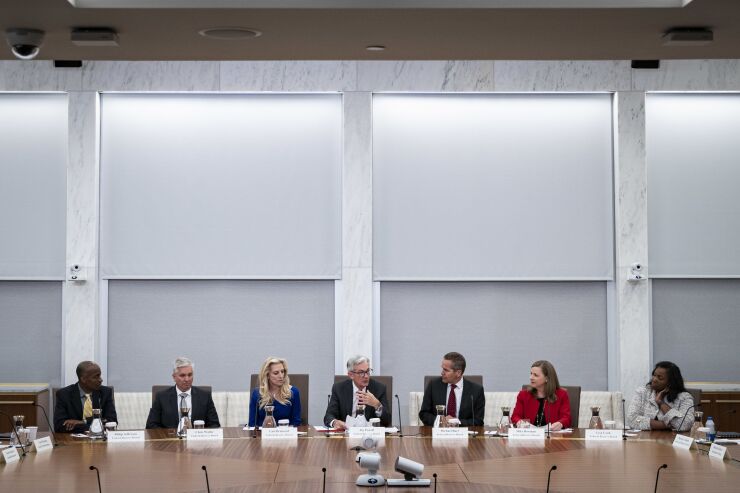I've got some breaking news to share: Interest rates are going to keep going up. But don't take my word for it — most Fed watchers are
Whether all of that comes to pass is of course uncertain, and the specific timing of the FOMC's premeditated murder of inflation matters less than its
I will leave it to others to determine whether the FOMC's plan of attack is ideal or whether it could have done things differently to achieve a better result. The Fed is like the college dorm residential assistant that breaks up the party — it is empowered to make necessary decisions that by definition make it unpopular in the short term in the name of achieving a long-term objective. But the Fed's role as the steward of monetary policy is rapidly approaching a point where it will be in conflict with its role as a regulator of banks, and the sooner both sides of the house are singing from the same sheet music the better off we all will be.

We don't always appreciate just how much bank regulation has changed in the last 15 years. Before 2008 there were no stress tests, there was no supplemental leverage ratio, there were no global systemically important banks, and there was no Basel III. Once the global economy was stabilized with zillions in bailout money from governments all over the world, regulators turned to the important work of engineering a set of banking rules that would ensure that nothing like that ever happened again.
What they came up with was an elaborate system that created offramps for failed banks, controls for the over-the-counter swaps market, prudential rules for financial market utilities, and lots of other neat stuff. But the first lines of defense were dramatically increased capital requirements and greatly increased liquidity, and if banks were found to not be holding sufficient capital and/or liquidity, they would face supervisory actions — including, but not limited to, a freeze on dividend payouts.
In good times, that makes sense — if the Coast Guard boards your boat and finds that the fire extinguisher is empty, it makes you get a new one. But if your boat is on fire and you're using your fire extinguisher to put it out, it doesn't make sense for authorities to board your boat and give you a ticket for not having a full fire extinguisher.

I don't want to make too much out of the irony that the Fed is imposing this problem on itself — if the Fed weren't fighting inflation, some other organ of government would hopefully be doing more or less the same thing. But as it is, the Fed needs to come up with a unified theory of what capital and liquidity are for. If they are for helping banks weather unexpected losses and preventing insolvency, then there needs to be a permission structure for banks to draw down their capital reserves when those losses are realized and for markets to understand that those drawdowns are normal, acceptable and temporary. If capital and liquidity are for creating the appearance of stability — if they are meant merely to exist and check a box — then the Fed needs to come up with some more operational way for banks to keep lending through the business cycle.
One tool that would actually be helpful here is the countercyclical capital buffer, which is meant to be raised in good times and lowered in bad times. As it is, the time for raising that buffer was probably several years ago, and at least part of the reason it has
The good news is that the Fed still has time to work this out. Banks are still





